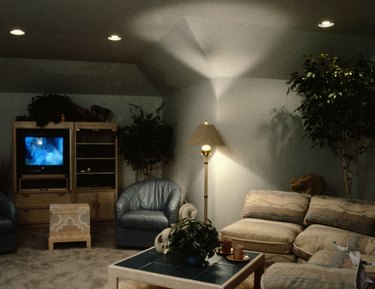
Infrared blasters and extenders are common in modern home theater and audio systems. Designed to increase the range and effectiveness of IR systems, blasters are core components of any extender package. Given that the vast majority of components are controlled via infrared, making sure the signals get there, regardless of installation circumstances, is critical. Without the blasters emitting signals to components, the extender kit is useless.
Common Problems
Video of the Day
Infrared signals are blocked by solid surfaces. IR is a form of light, invisible in most instances. As a result, these signals can also be interfered with by intense external light sources, such as sunlight and fluorescent bulbs. Many custom installations involve hiding components behind cabinet doors, wiring closets and access areas in basements. Since the line of sight is obscured by these solid surfaces, extending the IR signal to directly control audio/video components becomes necessary.
Video of the Day
IR Extenders
Extender kits incorporate a few components to do their job. Signals from the remote control are sent to a receiver, or "eye." This small component sticks to a television or other device, typically within sight and range of the primary viewing position. Alternately, these receivers are found in wall plates or tabletop versions. Specialized eyes used to block competing signals from plasma screens are common with modern flat panel installations. From the receiver, the signal travels to a distribution block. The individual emitters or blasters plug into this block, controlling the gear. All of this is powered by an AC power plug inserted into the distribution block.
IR Blasters
Blasters are the small teardrop-shaped units that carry the IR signal from the distribution block to the components tucked away in a cabinet or closet. These emitters stick over the top of the IR sensor on the individual components, directly controlling the device. Many times, these blasters have black plastic covers to protect them against "seeing" direct IR signals or other light sources. Installers often stick black electrical tape over them for this purpose as a field-expedient measure.
Other Blaster Types
Some IR kits have cone-shaped units that sit free-standing in a cabinet. This single cone sends infrared signals to all components in the cabinet or closet. Since components will only address IR signals coded specifically to them, this single IR source works without confusing the various devices in the environment. These units have an attachment that converts IR signals to radio frequency to pass signals through doors and walls, converting them back to IR so the components understand the commands.